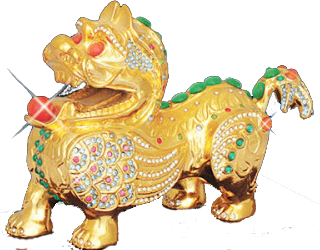Condition Treated / Pain Conditions
Periarthritis of Shoulder ( Frozen Shoulder )
What Is Periarthritis of Shoulder ( Frozen Shoulder )?
Periarthritis of the shoulder manifests as prolonged fixed pain in the shoulder area with restricted movements of the shoulder joint. It is often seen in those around the age of 50, thus it is called the "Shoulders of Fifties". The diseased area of the shoulder often has an aversion to cold. In the later stage when the adhesion of the tissues of the shoulder joint occurs, the shoulder is plagued with obvious movement restriction, which is called "congealed shoulder", "Bi of the shoulder" and "frozen shoulder".
What Causes and Pathogenesis of the Periarthritis of Shoulder ( Frozen Shoulder )?
It is usually caused by a weak body constitution, chronic strain and invasion of external wind and cold that disturb the flow of qi in the channels. Invasion of external wind and cold obstructs the flow of qi and blood of the shoulder; overstrain injuries of the muscles and tendons bring about qi and blood stagnation; and age has a qi and blood deficiency that fails to nourish the muscles, tendons and bones. All of the above can affect the flow of qi and blood in the the channels of the shoulder, with obstruction leading to pain.
Identification of Patterns
Chief symptoms Pain, soreness and a heavy sensation around the shoulder joint that worsens
during the night. It is often induced or aggravated by the change in weather and overworking.
Tender points are distributed over the anterior, posterior aspect and lateral side of the shoulder.
Both active and passive movements of the shoulder joint such as abduction, backward extension and
raising the arm are obviously restricted. In the later stage, muscular atrophy will occur.
In the pattern of invasion of cold, the pain is aggravated by catching wind and cold and is
alleviated by warmth; the patient has aversion to wind and cold and has a history of catching cold
patterns. In the pattern of qi and blood stagnation, the pain is aggravated by pressure; the tongue
is dark red or has purple spots, and the pulse is rough; the patient has a history of trauma or
overworking. The pattern of qi and blood deficiency may manifest as aches in the shoulder
aggravated by overworking and accompanied by vertigo and dizziness, fatigue of the four
extremities, a pale tongue with a thin-white coating and a thin, weak pulse.
What Can Acupuncture Do For Frozen Shoulder Treatment ?
(1) Primary treatment
Principal points Jianyu (LI 15), Jianliao (TE 14), Jianzhen (SI 9), and Ashi-point.
Supplementary points Add Hegu (LI 4) and Fengchi (GB 20) to the pattern of invasion of external cold; add Xuehai (SP 10) and Geshu (BL 17) to the pattern of qi and blood
stagnation; and add Zusanli (ST 36) and Qihai (CV 6) to the pattern of qi and blood deficiency.
Explanation Jianyu (LI 15), Jianliao (TE 14) and Jianzhen (SI 9) are points of the hand channels
of yangming, shaoyang and taiyang respectively; together with Ashi point, all are local points
which have the effect of dredging 'the flow of qi and blood in the channels of the shoulder area as
well as activating blood and dispelling wind to stop the pain.
(2) Alternate methods of treatment
Bloodletting and cupping Prick the tender point on the shoulder with a three edged needle to
allow slight bleeding, followed by cupping, or tapping the tender point on the shoulder with a skin
needle to allow some bleeding, followed by cupping.
Remarks
Acupuncture and moxibustion work well for periarthritis of the shoulder in the early stage; in the
later stage, massage can be used in combination to improve the therapeutic outcome. After shoulder
pain improves and swelling disappears, patients should do exercises of the shoulder joint under the
supervision of a doctor, as well as keeping the shoulder warm.
Pain Care Acupuncture Clinic is your local acupuncture office in Torrance, CA . specializing in treating injuries and chronic pain. Dr. Ming Chen and Dr. Lu Yang, Both acupuncturists who also the oriental medical doctor ( O.M.D. ) can pinpoint the cause of the injury and suggest the best treatment methods for you. You need our doctor to listen to the whole story and examine you, so that you can get started treating on your injuries or chronic pain and get you on the track toward recovery.
Call now for a free health consultation !
Visit out Pain Care Acupuncture Clinic in;
21320 Howthorne Blvd., Suite 203 Torrance, CA 90503
quick link
Condition Treated
- Pain Conditions
- Respiratory System Conditions
- Digestive System Conditions
- Circulatory System Conditions
- Blood System Conditions
- Endocrine System Conditions
- Nervous System Conditions
- Urogenital System Conditions
- Gynecological Conditions
- Tumour Conditions
- Emotional/Behaviour Conditions
- Sensor Organ Conditions
- Skin Conditions
- Other Conditions
 La acupuncture
La acupuncture













